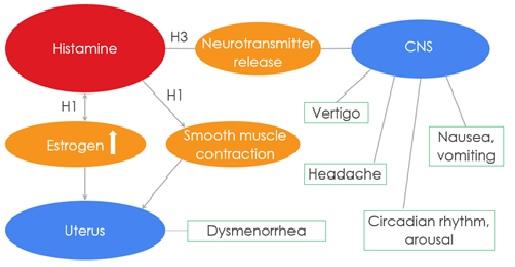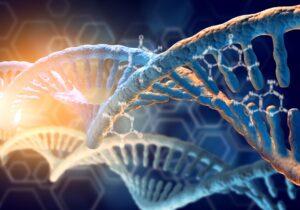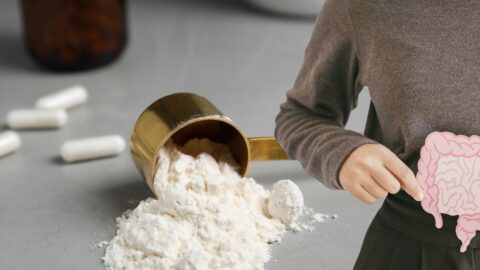Is Histamine the Reason you are Depressed?
By Vanita Dahia
Taking antihistamines for your allergies?
Anxious or depressed?
Suffer with migraine headaches?
If you have answered Yes to these questions, you may have a Histamine imbalance.
Histamine is a neurotransmitter or brain chemical derived from an amino acid called histadine. Histamine is well known for its association with allergies, eczema, or hayfever. It acts as an essential neurotransmitter to balance mood.
Histamine is involved in the sleep cycle and is required for learning, memory and alertness. Histamine regulates appetite and perception of pain.
Histamine imbalances play a major role in mental health due to its regulation of stress hormones.
High histamine levels are seen in depression, OCD, autism and recurrent migraine headaches.
Approximately 1% of the population has histamine intolerance, and 80% of those patients are middle-aged. (1)
Why use Anti-histamines, H2-antagonists for Allergy or Indigestion?
Histamine receptors are found throughout the body.
Histamine is released from mast cells in the blood to illicit a Histaminic or allergic response as a natural reaction to the “allergen”.
When you have an allergy like a reaction to food or pollen as in hay fever, an anti-histamine or H1-antagonist may alleviate and manage symptoms. H-1 receptors are also found in the uterus. An Anti-histamine might therefore be beneficial as an anti-spasmodic and provide relief for dysmenorrhea (painful periods).
When you have indigestion or acid reflux, you may take H2 antagonists like cimetidine.
Now, Histamine-3 receptors are found predominantly in the brain.

Histamine receptors
Histamine functions by acting on one of 4 receptors
H1 receptors are found in mucous membranes, uterus, skin and smooth muscle. Histamine intolerance can therefore manifest on as a consequence of H1-receptor responses as
• skin conditions, dermatitis, pruritis(itchy skin)
• respiratory conditions, shortness of breath, sneezing hay fever symptoms
• Uterine dysfunction, painful periods, muscle spasms
• Cardiovascular system, low blood pressure, vertigo, arrythmia ( also with H-2 receptors)
H2- receptors are found in the gut and immune systems. Histamine intolerance can therefore manifest on as a consequence of H2-receptor responses as
• Gut issues, stomach aches, cramps, diarrhoea,
• Poor immunity
H3-and H4-receptors are found in the central nervous systems. Histamine intolerance can therefore manifest on as a consequence of H3 and H4-receptor responses as
• Circadian rhythm changes, poor sleep
• Headaches
• Vertigo
• Poor focus, memory
In a nutshell, Histamine intolerance causes smooth muscle cell contraction, vasodilatation, increased vascular permeability and mucus secretion, tachycardia, alterations of blood pressure, rapid heart rate, and stimulation of gastric acid secretion.
How does Histamine Intolerance Start?
Histamine intolerance develops when Histamine slows down its degradation or metabolism allowing for Histamine to accumulate and become toxic to the body.
Dietary histamine is rapidly detoxified by amine oxidases, whereas persons with low amine oxidase activity are at risk of histamine toxicity. Diamine oxidase (DAO) is the main enzyme for the metabolism of ingested and dietary histamine. DAO is driven by Copper and antioxidant nutrients.
Histamine is also detoxified and metabolised via histamine N-methyltransferase (HNMT), the other important enzyme inactivating histamine. HNMT is driven by methyl factors. HNMT is generally the key enzyme for histamine degradation in the bronchial epithelium. This is why you may experience shortness of breath when you have a HNMT genetic polymorphism.(2)
Histamine-rich Foods Trigger Allergy
Intake if histamine-rich foods, alcohol or drugs that release histamine or block DAO may provoke diarrhea, headache, rhino conjunctival symptoms, asthma, hypotension, arrhythmia, urticaria, pruritus, flushing, and other conditions in patients with histamine intolerance.
Symptoms can be reduced by a histamine-free diet or be eliminated by antihistamines.
Histaminic -type reactions may be similar to different diseases, such as food allergy and intolerance of sulphites, histamine, or other biogenic amines (eg, tyramine). Often histamine intolerance presents with symptoms similar to that of sulphite and salicylate intolerance.
Signs and symptoms of Histadelia (High Histamine)
- high libido
- hyperactivity
- blank mind episodes
- chronic depression
- strong suicidal thoughts
- low pain tolerance
- seasonal allergies and frequent colds
- rapid metabolism
- profuse sweating
- frequent stomach aches, pain
- high energy
- high inner tension
- strong will
- social isolation
- light sleeper
- addictive tendencies
Low Histamine Levels
Low histamine levels (Histapenia) is associated with mental health issues. Histamine is required for arousal, pain perception and regulates adrenal function. Histapenia patients are likely to suffer depression, poor motivation, self-mutilation and anxiety. Typically, low histamine manifests as depression, poor motivation, anxiety, and more complex mental health conditions like schizophrenia, alcoholism and dementia.
Signs and Symptoms of Low Histamine (Histapenia)
- food sensitivity
- depression
- grandiosity
- poor motivation
- tinnitus
- low libido
- panic and anxiety
- self mutilation and self isolation
Histamine levels is one of many ways to assess methylation. Histadelics are predominantly undermethylators. Dr Carl Pfeiffer is his extensive publications on ADD, and ADHD has shown that restoring methylation with specific natural nutrients can normalize methylation and histamine.
Sexual Attraction with Histamine
Hormonal dysregulation may contribute to mental health conditions like depression. Research has shown that histamine release is increased by oestrogen. Oestrogens are essential hormones required for regulation of sex, vaginal lubrication, and maintenance of PMS and menopause. A lack of oestrogens brings about a lack of interest in sex, dry vagina, hot flushes, moodiness and irritability.
Oestrogens make you more attractive to the opposite sex, induce pheromones and odors. Histamine induces neurons that stimulate arousal, motivation or vocalisation and libido. The excitatory effect of histamine on arousal is enhanced by oestrogen. In a female oestrogens peak in the productive years in line with their libido. As a male ages, oestrogen production increases particularly during their midlife. This may be the reason why males during their midlife crisis cause more histamine to be released.
Histamine could be why you could be attracted to the opposite sex. (3)
Testosterone in men tends to convert to estrogen as men age leading to andropausal symptoms like pot belly, receding hairline and the old “grumpy man’s syndrome”. Estrogen and histamine stimulation can be one mechanism by which men may seek extramarital sexual relationships – we colloquialise this a mid-life crisis!!
In females, histamine is produced by the mast cells and endothelial cells in uterus and ovary. As Histamine increases oestradiol production thereby causing a decline in progesterone. This leads to cyclical headaches and painful periods. The painful uterine contractions associated with dysmenorrhea are caused by an increased production of inflammatory prostaglandins which is stimulated by oestrogens and inhibited by progesterone. This is why progesterone or progesterogenic herbs are useful for PMS. Histamine can therefore intensify PMS and pain via an increase in estrogen production.
Histamine antagonists like cimetidine can contribute to low libido and erectile dysfunction by reducing the uptake of testosterone. Injections of histamine in men with impotence has been shown to improve erections.
Sexual Offenders and Histadelia
Could there be a correlation between high histamine (Histadelia) with sexual offenders or rapists?
Histadelia, is a disorder of too much histamine and seems to be prominent in males. These sexual offenders will experience phobias or no phobias at all, chronic depression, hyperactivity, agitated, compulsions, obsessions, and have a lean build, rapid metabolism, and will sweat profusely. They will also have a high imagination, have lots of saliva, low tolerance to pain, very strong sexual desires and have addictive personalities.
Histamine and Headaches
Histamine-induced headache is a vascular headache caused mainly by nitrate monoxide. In migraine patients, histamine levels have been shown to be elevated both during headache attacks and during symptom-free periods. (4)
Migraine patients may have histamine intolerance as a result of reduced DAO activity. This triggers headaches by food rich in histamine, such as, long-ripened cheese, blue cheese or wine. (5)
Removing the histamine-rich foods can alleviate headaches and migraines in these patients.
Therapy is based on the consequent conduction of a histamine-free diet. Alcohol and long-ripened or fermented (and therefore histamine-rich) food, such as aged cheese, cured meat, and yeast products; histamine-rich food, such as spinach or tomatoes; or histamine liberators, such as citrus fruit, should be avoided.(6)
Diets for Histamine Excess
Anti-Histamine Diet by Orthoplex
Educational Webinar
Brain Fog and Allergies to Mast Cell Activation
In this webinar, you will learn:
- What is the impact of allergies on the body
- What is Mast cell Activation Syndrome (MCAS) and what causes it
- How to diagnose and manage allergies, sensitivities, Histamine and MCAS with pharmaceutical and natural treatments
Test for Allergies, Histamine, Mast Cell Activation Syndrome
Histamine can be tested as a functional pathology test in a blood sample. It is appropriate to delve deeper into the metabolic blocks associated with histamine imbalance by identifying in-depth testing for mental health, testing for female hormones, testing for male hormones, testing for mental health.
Regulating Histamine requires detailed assessment of Histamine with other excitatory and inhibitory neurotransmitters and correcting them with appropriate natural inhibitors or inducers. To ascertain the relevance of Histamine within the sexual offender, it is important to identify upstream regulators.
To really delve deeper into Histamine levels, the measure of Histamine is not enough. It is important to measure how Histamine is metabolised.
A measure of Histamine, DAO and HNMT is recommended. Identification of methylation status is also recommended.
References
- Missbichler, A et al, Stuttgart, Germany: Georg Thieme Verlag KG, 2004:8–17 (in German)
- Suzuki H, et al. .Structure and function of human histamine N-methyltransferase: critical enzyme in histamine metabolism in airway. Am J Physiol 1994;267:L342–9.uchi
- “Histamine-Induced Excitatory Responses in Mouse Ventromedial Hypothalamic Neurons: Ionic Mechanisms and Estrogenic Regulation” Journal of Neurophysiology Published 1 December 2007 Vol. 98no. 3143-3152
- Thomsen LL, Olesen J. Nitric oxide in primary headaches. Curr Opin Neurol 2001;14:315–21
- Krabbe AA, Olesen J. Headache provocation by continuous intravenous infusion of histamine. Clinical results and receptor mechanisms. Pain 1980;8:253–9.
- Wantke F, Gotz M, Jarisch R. [The histamine-free diet]. Hautarzt 1993;44:512–6 (in German)




